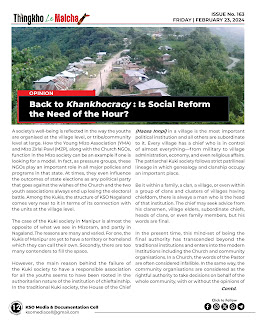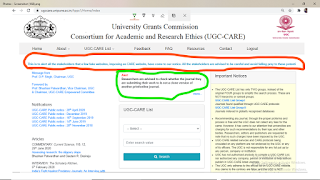Back to Khankhocracy: Is Social Reform the Need of the Hour?
A society’s well-being is reflected in the way the youths are organised at the village level, or tribe/community level at large. How the Young Mizo Association (YMA) and Mizo Zirlai Pawl (MZP), along with the Church NGOs, functions in the Mizo society can be an example if one is looking for a model. In fact, as pressure groups, these NGOs play an important role in all major policies and programs in that state. At times, they even influence the outcomes of state elections as any political party that goes against the wishes of the Church and the two youth associations always end up losing the electoral battle. Among the Kukis, the structure of KSO Nagaland comes very near to it in terms of its connection with the units at the village level.
The case of the Kuki society in Manipur is almost the opposite of what we see in Mizoram, and partly in Nagaland. The reasons are many and varied. For one, the Kukis of Manipur are yet to have a territory or homeland which they can call their own. Secondly, there are too many contenders to fill the space.
However, the main reason behind the failure of the Kuki society to have a responsible association for all the youths seems to have been rooted in the authoritarian nature of the institution of chieftainship. In the traditional Kuki society, the House of the Chief (Haosa Innpi) in a village is the most important political institution and all others are subordinate to it. Every village has a chief who is in control of almost everything—from military to village administration, economy, and even religious affairs. The patriarchal Kuki society follows strict patrilineal lineage in which genealogy and clanship occupy an important place.
Be it within a family, a clan, a village, or even within a group of clans and clusters of villages having chiefdom, there is always a man who is the head of that institution. The chief may seek advice from his clansmen, village elders, subordinate chiefs, heads of clans, or even family members, but his words are final.
In the present time, this mind-set of being the final authority has transcended beyond the traditional institutions and enters into the modern institutions including the Church and community organisations. In a Church, the words of the Pastor are often considered infallible. In the same way, the community organisations are consider as the rightful authority to take decisions on behalf of the whole community with or without the opinions of the members. In this way, those democratic elements rooted in the traditional values [Khankho-Nunkho] that offers space for the common people to raise their voice are often suppressed. We call this attitude the “Haosapu Mentality”.
Among the Mizos, since the institution of Chieftainship was done away with 70 years ago, they can now imagine a democratic way of life. For them, leadership is no longer the monopoly of the chiefs. This has been adapted to some extent by our Unau tribes in Lamka. For some of the other kindred tribes, particularly those belonging to the R-Group, since they have also discarded hereditary chieftainship many years ago, they could fare a little better at least at the village administration.
For most of the G-Group of tribes, particularly the Thadou-Kuki speaking community, the traditional chieftainship style of functioning is still evident in all walks of life. Even the chiefs [Veng Haosa] of villages in towns are not essentially different even though the villagers owned their respective homesteads.
What is more intriguing in the Kuki society is that, the elitist groups are always the chief, or from the chiefs’ families. However, the problem is not so much about a chief, or somebody from the chief family, becoming an elite, but leaders having the “Haosapu Mentality”!
To reform the Kuki society requires a revolution led by a visionary leader who is ideologically sound. Yet, reform can also be brought through gradual process. This will not only be acceptable to the larger community but also more civilising.
To many, the first step of reform would be to have a social platform where all the youths of the community can feel at home. To make it representative, the said platform, thus formed, must be rooted at the village level. As of now, there is the KSO that apparently represents all the youths but at the same time most of the youths are not formally members of it at the grassroots level. To make this idealistic view a reality, the following points may be taken into consideration:
1. There should be a General Headquarters, preferably in Lamka being the largest town, and Joint Headquarters in other States where there are sizable Kuki populations.
2. Every district, or a combination of two or more districts wherever there are sizable Kuki population, shall have a branch.
3. Below the branch level comes the block.
4. And again below the block, there shall be village youth clubs, or for that matter area level youth unions, that will be the constituent units of the block. This flexibility at the village level is inevitable since most of the Kuki villages are small in size. However, villages having enough households, say 100 or more, may also be a unit of the block. In case there is a cluster of small villages, a group of villages or localities in the case of a town may come together and form a unit. These units must be the basis or foundation of the organisation at the grassroots level.
5. Each village, or clusters of villages and localities, may have their own units [Vengs in the case of towns and bigger villages, and villages in the case of group of villages] where all the individuals/youths are members.
6. Over and above, there should be a strong standing committee, or advisory board, who will act as the eyes, ears, and brain, of the organisation at all the levels. This will not only provide a room for senior/former members, experienced persons and experts to have a say but even people working in different organisations who are legally barred from becoming a member can play key roles.
It may also be kept in mind that the jurisdiction of such organisations and its branches/units shall not necessarily follow the existing administrative boundaries as these can be altered any time. Instead, the size of Kuki population in the respective area should be given priority while demarcating the jurisdictions of the branches/units within that organisational structure.
Now, if the above mentioned organisational structure is put in place accordingly, an individual by default becomes a member of the youth club at the village level; each village/group of villages (clusters) form a unit at the block level; block levels form the district branch, and the district branches, including those from the cities, will form the General Headquarters, or the joint Headquarters as the case may be. In other words, each individual who is a member of a local youth club [in]directly becomes a member of the General Headquarters/Joint Headquarters.
In the same way, the channel of information or chain of command should flow through this structure in formal/official matters, but as per the need, direct communication may also be maintained between any two levels or among units of the same level. This will make the organisation not only efficient but also ensure the participation of the subordinate units.
In the present Kuki society, whereas the relationship between the General Headquarters, branches, and blocks are usually efficient, there is often lack of coordination between the blocks and its village units, except to some extent in Lamka. If this structural reform is put in place by focussing on the grassroots, the functioning of the organisation may become more democratic and perhaps more participative. In other words, election to the offices at the base (village units) will be conducted through direct elections, and those of the other levels will be through indirect election comprising of all the units and branches.
Once this desired restructuring is executed for the youths, the society can hope for reforms at other levels too. And remember, every organisation – be it the Inpis, Church, or political parties – will listen to such an organisation where all the youths are members as in the case of Mizoram. That organisation, if it works enthusiastically, will also come in handy in a conflict situation like the present one where the mobs often run the show without listening to the leaders. Say, to control a 500 or 1000-strong mob, the leaders of a district/branch alone may not be sufficient. So, imagine the executives of a district/branch so elected through proper channel based on merit alone being assisted by the representatives of all the blocks or units in unison!
In the meantime, we often talk about social activists being too self-centred but never question the system which endorses such corrupt practices. Undoubtedly, if a member of an organisation becomes corrupt, it is not the fault of the individual alone but the system that provides the room. Similarly, good leaders are the by-products of good societies, and not vice-versa. A leader howsoever capable he is can’t lead a society in the right way unless the society itself is enlightened. Anyway, the Kuki society badly needs regeneration through social reforms rooted in the traditional value Khankho.
(Courtesy: KSO Bulletin Thingkho le Malcha, Issue No.163, February 23, 2024).




Comments
Post a Comment